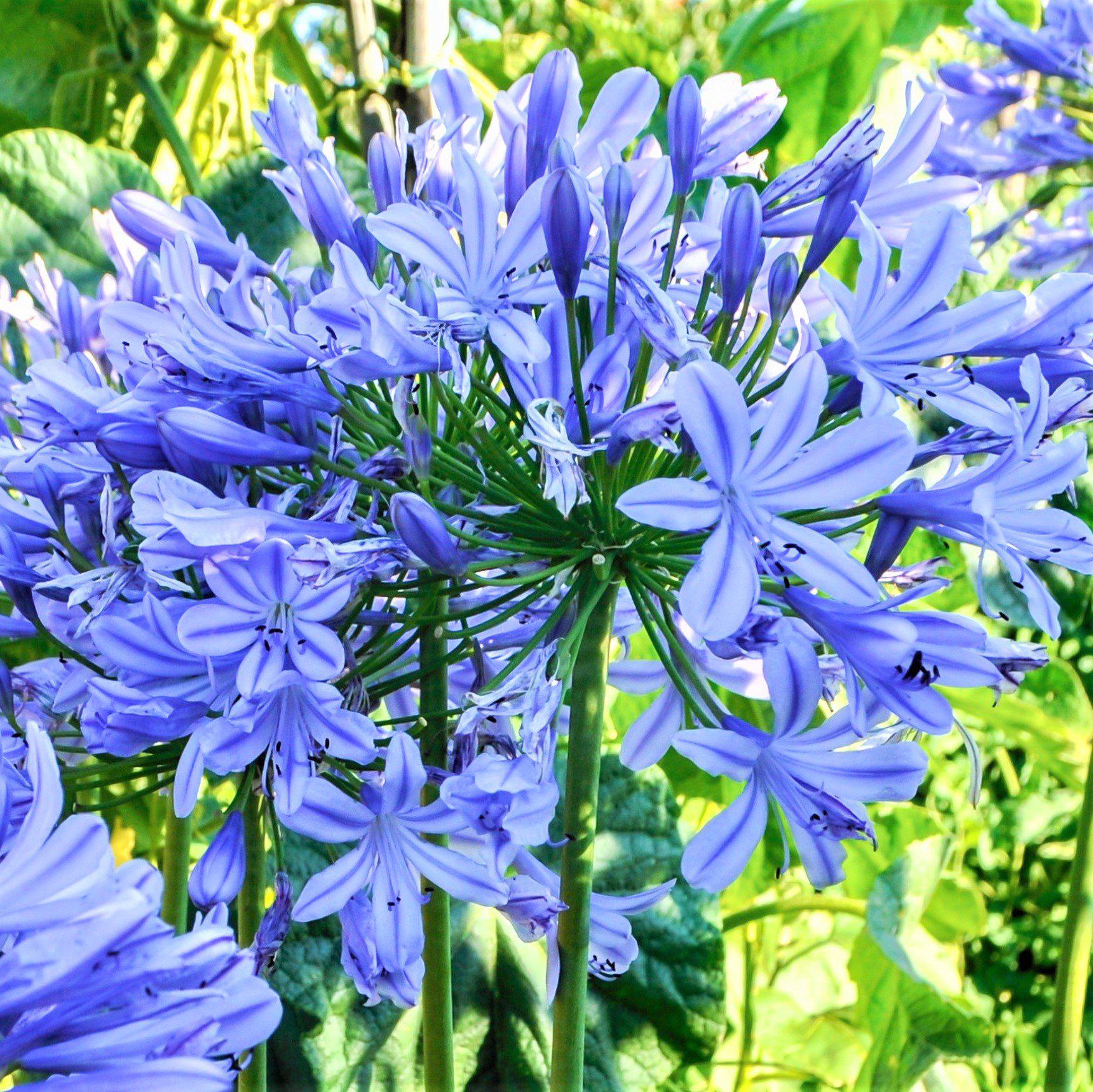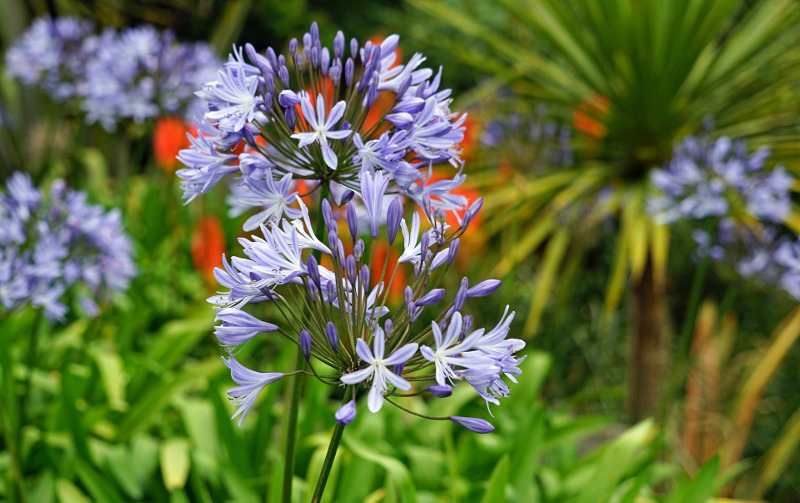Agapanthus Growing Conditions: Soil, Sunlight, and Watering
Agapanthus Growing Conditions: Soil, Sunlight, and Watering
Blog Article
Letting Loose the Secret to Successful Agapanthus Farming: Tips and Tricks for a Flourishing Garden
In the realm of gardening, cultivating agapanthus successfully calls for a strategic approach that encompasses different elements of plant treatment. By comprehending the nuances of agapanthus farming, one can develop an environment where these plants flourish and grow perfectly.
Planting Agapanthus: Ideal Practices
When planting Agapanthus, appropriate dirt prep work is crucial for ensuring successful development and advancement of these beautiful blossoms. Agapanthus, commonly called Lily of the Nile or African lily, prospers in well-draining dirt with a slightly acidic to neutral pH level - Agapanthus. Before growing, it is critical to modify hefty clay dirts with raw material such as compost or peat moss to boost drain and supply necessary nutrients for the plants
To grow Agapanthus, pick an area that gets complete sunshine to partial color, as this will promote healthy growth and abundant blooming. Dig an opening two times the size of the plant's origin sphere and put the Agapanthus at the exact same depth it was formerly expanding. Delicately backfill the opening with dirt, pushing down strongly to eliminate any type of air pockets around the origins.
Water the freshly planted Agapanthus completely and remain to maintain the dirt uniformly damp, particularly during the plant's active expanding period. Agapanthus. Applying a well balanced plant food once a month can additionally sustain the plant's growth and flowering. By complying with these finest methods for planting Agapanthus, you can develop a magnificent display of these captivating blossoms in your garden
Ideal Dirt Issues for Agapanthus
For ideal development and growing success of Agapanthus plants, guaranteeing the dirt conditions are optimal is essential. Agapanthus chooses dirt that is abundant in nutrients, so integrating a balanced fertilizer during the growing period can advertise healthy and balanced growth and vibrant flowers.

Watering and Fertilizing Tips
To ensure healthy and balanced growth and vibrant blooms, correct watering and feeding techniques are essential for effective Agapanthus farming. Agapanthus plants benefit from regular watering, specifically during the expanding period.
When it pertains to fertilizing Agapanthus, a balanced plant food with equal parts nitrogen, phosphorus, and potassium can be applied in the springtime to advertise healthy development and blooming. Slow-release fertilizers are excellent for supplying nutrients slowly over an extended duration. Prevent over-fertilizing, as this can result in excessive vegetation growth at the expenditure of blooms.
In addition, integrating raw material like compost into the dirt can boost nutrient levels and boost soil structure, assisting in the total health and wellness of the Agapanthus plants. By following these watering and feeding tips, garden enthusiasts can guarantee their Agapanthus plants prosper and create magnificent screens of blossoms.
Pruning and Deadheading Strategies
Proper pruning and deadheading strategies play an essential function in maintaining the health and wellness and visual appeals of Agapanthus plants, enhancing the vital techniques of watering and feeding for successful growing. Pruning Agapanthus includes removing spent blossom heads, yellowing or dead fallen leaves, and overall shaping of the plant to advertise better growth. Deadheading, the procedure of removing discolored blossoms, not only improves the plant's appearance yet likewise urges further growing.
When deadheading Agapanthus, it is a good idea to trim off the flower stem at the base using sharp, clean shears. This procedure reroutes the plant's energy from seed production back right into origin and vegetation development, promoting a much healthier and more robust plant. Routine deadheading can expand the blooming period of Agapanthus and avoid self-seeding, which can cause congestion.
In terms of pruning, Agapanthus usually benefits from a light trim after blossoming to clean up the plant and encourage fresh growth. Reducing the invested blossom stems and eliminating any type of dead or damaged foliage helps keep the plant's vitality and general appearance. However, it is important to avoid cutting into the crown of the plant, as this can deteriorate its health.

Protecting Agapanthus From Pests and Diseases
Applying efficient parasite and illness management strategies is critical to securing the health and wellness and vigor of Agapanthus plants in growing. One typical visit this site parasite that affects Agapanthus is the Agapanthus borer, a caterpillar that passages right into the plant, causing damages to the flowers and leaves.
Along with pests, Agapanthus are prone to illness such as origin rot and fungal leaf spots. These concerns can typically be protected against by guaranteeing correct water drainage and staying clear of overwatering. If indications of disease show up, affected components of the plant should be quickly removed to avoid more spread. Fungicides may additionally be made use of as a treatment procedure, adhering to the manufacturer's guidelines thoroughly. resource By remaining watchful and resolving insect and illness concerns quickly, gardeners can help their Agapanthus flourish and flourish.

Verdict
In final thought, successful growing of agapanthus requires appropriate growing methods, ideal soil conditions, sufficient watering and fertilizing, routine trimming and deadheading, and defense from insects and diseases. By following these pointers and techniques, garden enthusiasts can guarantee a prospering garden filled with gorgeous agapanthus blooms. Agapanthus. Remember to maintain regular treatment and interest to detail to promote the health and wellness and longevity of these magnificent plants
When planting Agapanthus, proper soil preparation is necessary for making certain successful development and advancement of these attractive blossoms.Water the freshly grown Agapanthus extensively and continue to keep the dirt uniformly wet, especially during the plant's active growing period.For optimum development and flowering success of Agapanthus plants, ensuring the dirt conditions are perfect is critical. When planting or transplanting Agapanthus, make sure the soil is well-prepared to supply the required foundation for the plants to develop themselves successfully. find this One common insect that impacts Agapanthus is the Agapanthus borer, a caterpillar that tunnels into the plant, creating damages to the fallen leaves and flowers.
Report this page